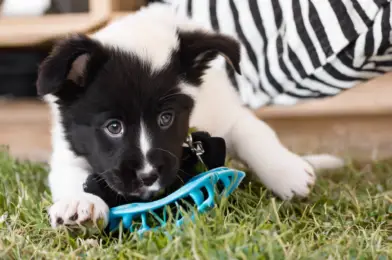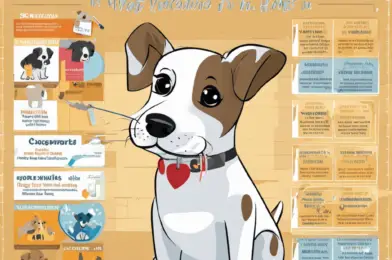Bringing home a new puppy is an exciting time, but it also comes with the responsibility of ensuring their safety and well-being. Puppy-proofing your home is essential to prevent accidents and create a safe environment for your furry friend to explore and grow. Here’s a comprehensive guide to help you navigate the process, room by room, and make your house a haven for your new puppy.
**The Living Room:**
The living room is often the heart of the home, and puppies are naturally curious about this space. Start by covering electrical outlets with childproof plugs to prevent chewing. Tuck away any loose cables or wires, as puppies love to nibble on them. Secure your houseplants out of reach since many common species are toxic to dogs. Use pet-friendly cleaning products and keep them locked away when not in use. Remove small items that can be chewed or swallowed, including remote controls, slippers, and decorative items. Invest in a sturdy trash bin with a locking lid to prevent your puppy from exploring its contents. Lastly, teach your pup early on that chewing furniture is off-limits with consistent, positive reinforcement.
**The Kitchen:**
Kitchens can be hazardous for curious puppies. Keep trash cans secured and consider using childproof locks on cabinets and drawers to prevent access to cleaning supplies and potentially toxic foods. Avoid leaving food on countertops, as puppies can reach higher than you might think. Install a baby gate to restrict access to the kitchen during cooking or consider crate training your puppy to keep them safely contained. Ensure that knives and other sharp objects are stored safely, and never leave them unattended on counters.
**Bedrooms:**
Puppies often view bedrooms as cozy hideouts. Remove temptations such as shoes, socks, and clothing from the floor. Use a laundry basket with a lid, as puppies adore snuggling into warm, freshly laundered clothing. Keep nightstands clear of any medications, and secure jewelry boxes to prevent any accidental swallowing of small items. Close doors or use baby gates to restrict access to bedrooms when unsupervised, as puppies may chew on bedposts or curtains.
**Bathrooms:**
Bathrooms can be potential danger zones due to medications, cleaning products, and electrical appliances. Store these items in locked cabinets or high shelves. Keep toilet lids closed to prevent puppies from drinking harmful chemicals or drowning. Ensure electrical appliances like hair dryers and straighteners are unplugged and stored safely after use.
Puppy-proofing your home is an essential aspect of responsible pet ownership. By taking these precautions, you’ll create a safe and stimulating environment for your puppy to grow into a happy and healthy adult dog. Remember, consistent training and supervision are key to ensuring your puppy’s safety and well-being.








